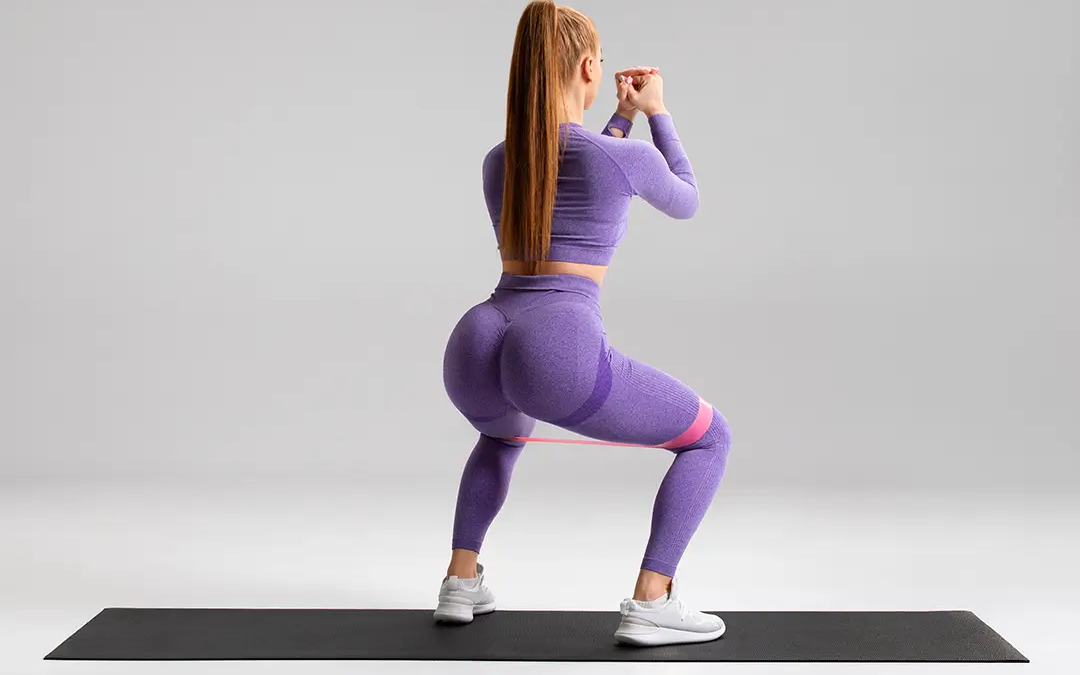When it comes to plumping your derriere, which is better: BBL vs. Squats?
While both can enhance your buttocks, the transformative and immediate impact of a Brazilian Butt Lift far surpasses what squats alone can achieve. But that doesn’t mean squats won’t boost your booty, either.
At Dr. Cat Plastic Surgery, we’ve performed countless BBL procedures. From our experience, the voluptuous backside most patients desire simply can’t be achieved through exercise alone. Perhaps the real secret lies in combining squats with top-notch BBL surgery.
Today, we’re here to clear the misconceptions and explore the best way to get the curves you dream of.
Brazilian Butt Lift: The Truth Behind the Hype
A Brazilian Butt Lift (BBL) is a surgery designed to enhance the shape and volume of your buttocks. First, fat is liposuctioned out of predetermined areas (like your stomach, arms, or thighs) to contour any trouble spots.
Your surgeon then processes that fat by liquifying and sterilizing it. Afterward, they skillfully inject it into the buttocks to sculpt a more aesthetically pleasing shape.
Most of Dr. Cat’s patients say her exclusive technique makes BBL recovery feel quick and painless. The most challenging part? Not being able to sit or lay on your backside for a few weeks.
In addition to wearing compression garments, you’ll have to limit the pressure on your backside for the first month or so. During this period, BBL support pillows and clever sitting positions (like straddling a chair and draping your booty off the edge) become your holy grail.
In six to eight weeks, your buttocks will enter the fluff phase, and the results of your surgery begin to take form. After six months to a year, the transferred fat fully settles, and your final outcome is fully visible.
Butt Lift Surgery Risks to Consider
As with any procedure, one drawback to BBLs is the potential for risks and surgical complications. These risks can include:
- Persistent swelling, bruising, or poor healing
- Infection or excess bleeding
- Discoloration or changes in skin sensation
- Reabsorption of transferred fat
- Blood vessel or nerve damage
- Overcorrection (too much fat removed or re-injected)
- Under-correction (too little fat removed or re-injected)
- Asymmetry, irregularities, or dissatisfactory results
Needless to say, this isn’t something you’d have to worry about with exercise. But as the saying goes, greater risks lead to greater rewards.
One way to bypass potential complications? Choose a board-certified surgeon versed in Brazilian Butt Lift surgery, like Dr. Cat. With a history of exceptional results, Dr. Cat is a master of sculpting transformative yet natural buttock enhancement with minimal risks.
Her philosophy: BBLs (and all body sculpting surgeries, for that matter) are an art. With her expertise and meticulous eye for detail, your results will be nothing short of a masterpiece.
If you’re not quite ready to embrace butt lift surgery, it might be time to add more squats to your daily sweat sesh.
Glute Enhancement Through Squats
 There are many different squat variations, but the standard movement consists of standing with your legs shoulder-width apart. From there, you bend your knees and lower yourself until your thighs parallel the ground. You hold for a few seconds and then stand back up.
There are many different squat variations, but the standard movement consists of standing with your legs shoulder-width apart. From there, you bend your knees and lower yourself until your thighs parallel the ground. You hold for a few seconds and then stand back up.
As for what areas they target, squat exercise benefits your quadriceps, hamstrings, glutes, abs, and calves.
A consistent squat routine can offer some form of natural buttock enhancement but has limitations. This is because your booty’s shape (and the entire body, for that matter) is determined by three distinct factors:
- Bone structure: Determined by genetics and can’t be altered through exercise.
- Muscle length and position: You can increase muscle bulk, but you can’t change the length and position of your muscles.
- Fat distribution and volume: Fat cells can grow or shrink based on weight, diet, and exercise, but genetics account for their density.
While squats can firm and shape a sagging butt, the results are much less dramatic and predictable than a BBL. And for some unlucky individuals, even a solid squat routine and strict diet won’t achieve the drastic results you’d get with surgery.
Ultimately, it’s about more than consistency and discipline—it comes down to your anatomy, genetics, and family history.
That said, squats aren’t for everyone. People with chronic knee, hip, or back pain might find they’re too risky or uncomfortable.
As for which is best for you, it depends.
BBL vs. Squats: Your Ideal Approach
Choosing which path is most ideal depends on several factors. Some questions you’ll want to think about:
- Are you looking for a dramatic change or a subtle improvement?
- How quickly do you want to see results?
- What does your budget look like? Can you afford BBL surgery?
- How do you feel about plastic surgery? The BBL recovery process?
- Will you be able to adhere to your post-operative guidelines?
- How important is the longevity of your results?
Reflecting on these questions helps you make a decision that aligns best with your personal goals, health, lifestyle, and finances.
To make the deliberation process a bit easier, here’s an overview of the pros and cons of BBL surgery vs. fitness:
| Brazilian Butt Lift Advantages | Brazilian Butt Lift Disadvantages | Squat Routine Advantages | Squat Routine Disadvantages | |
| Instant results | Surgical risks | Benefits your physical and mental health | Requires consistent time and effort | |
| Fully customizable | Recovery can be challenging | No surgical risks | Less dramatic results | |
| Long-lasting | Higher financial investment | Cost-effective | Limited by your anatomy | |
| Contours other parts of the body | Limited by existing fat distribution | Completely natural | Not suitable for everyone |
The real game-changer? Combining your BBL with a consistent squat routine.
Enhancing BBL Results with Squats: A Match Made in Gluteus Maximus Heaven
The debate between cosmetic surgery vs. exercise is nothing new. Our stance? You don’t have to choose one over the other. We believe in the synergistic relationship between transformative plastic surgery and a healthy, active lifestyle.
And when it comes to your BBL, squat exercise benefits your curves by making your booty look even better. The only catch? You must wait until your surgeon gives you the green light to resume your workouts post-op.
We know what you’re thinking: shouldn’t I avoid burning fat in that area if a BBL relies on fat transfer? Yes and no.
If you’re simply losing weight (without exercising your buttocks), then your assumptions are valid. In this case, you’d be shrinking fat cells without supplementing it with muscle.
However, when you perform squats, you build muscle instead of decreasing fat cells. Therefore, you combat the shrinkage and boost your BBL results—hello, tight, toned, bodacious Jlo booty.
Reshape Your Backside and Your Confidence with Dr. Cat Plastic Surgery
So, in the battle of BBL vs. squats, which booty booster reigns supreme? Well, that decision is yours.
As we’ve learned, squats can perk up your derriere, but they can only go as far as your genetic predisposition allows.
BBLs, though more of an investment and carrying some risks, allow you to become the Picasso of your desired silhouette. And with a renowned surgeon like Dr. Cat wielding the paintbrush? You can be confident your results will be as enduring as they are life-changing.


